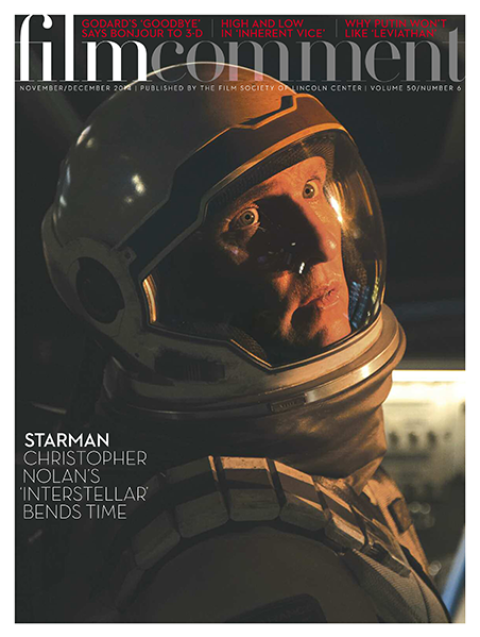
James Marsh was an unexpected choice to direct a mainstream movie about the tumultuous relationship between the language scholar Jane Wilde and the physically disabled theoretical physicist Stephen Hawking, before, during, and after their 26-year marriage. Little in the English filmmaker’s résumé suggested his affinity for an academia-based romantic drama with an overcoming-impossible-odds theme. He has explored Northern and Southern American Gothic with the docudramas Wisconsin Death Trip (99) and The Team (05), respectively; made exemplary philosophical documentaries in Man on Wire (08) and Project Nim (11); and fused noir and Brit realism in Red Riding: 1980 (09) and Shadow Dancer (12).
There isn’t a sequence in those films as celebratory as the Cambridge May Ball setpiece early in The Theory of Everything, which consecrates the love that Jane (Felicity Jones) and Stephen (Eddie Redmayne) feel for each other against the backdrop of a spectacular fireworks display. Nor is there anything as intimate as the devoted look Jane gives Stephen while cleaning his glasses during their first encounter after he is diagnosed with motor neuron disease—and given two years to live—in 1963.
Marsh and cinematographer Benoît Delhomme’s exquisite harnessing of light and the former’s guiding of Jones and Redmayne to performances of surpassing delicacy elevate such passages to something beyond Douglas Sirk. The whizbangs of those pyrotechnics do not merely reflect the couple’s euphoria but align the universe’s origins with the Big Bang of cathexis. The sun rays that Jane admits to the darkened room where Stephen is slumped in understandable self-pity after the diagnosis augur that she’ll become his savior in the uncertain years ahead. Her wiping of his spectacles—echoed at film’s end when they are no longer together but reconciled in friendship as the parents of three children—indicates her role as the one who enabled him to see clearly.

Redmayne will deserve every award he’ll win for capturing Hawking’s emotional responses at each stage of his progressively worsening disease. Jones’s portrayal of a woman whose marriage becomes a form of domestic servitude is equally affecting—if not more so. Adapted by Anthony McCarten (with necessary flashes of liberating humor) from the second and more conciliatory of Jane Hawking’s memoirs, the film harmonizes with The Invisible Woman, in which Jones was formidable as Nelly Ternan, the mistress of Charles Dickens and another bright, conscientious woman who submits to a male genius out of love.
Whereas Nelly fights to resurrect her crushed ego years after Dickens’s death, Jane does so within the constraints of her marriage by falling for the sympathetic widowed choirmaster, Jonathan Hellyer-Jones (Charlie Cox), who helps her take care of Stephen and whom she would later marry. Jane’s taking of romantic action reverses the couple’s roles, forcing Stephen to become the reactor. Having cottoned onto the frisson between Jane and Jonathan before they’ve slept together, Stephen leers superbly to himself while politely ushering the interloper from the Hawking house after they’ve dined. Later that night, he tacitly permits Jane to start an affair—a moment Redmayne makes less humiliating than dignifying. His succumbing to the sexually charged flirtations of a home nurse, Elaine Mason (Maxine Peake), his future second wife, is less appealing. If the movie becomes a metaphor for the long haul of most marriages, it is sharp, though not exactly progressive, on what men and women specifically require in terms of what Blake calls “the lineaments of gratified desire.”
Marsh’s sublime film ends with a rapprochement, but not before a poignant note has been sounded about the marriage’s combustion. The grand sweep of the title suggests that whereas Hawking satisfactorily explained the mysteries of the universe, the mysteries of love remain imponderable.








